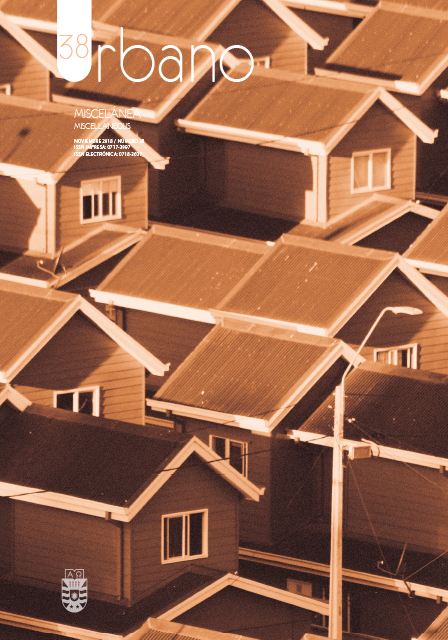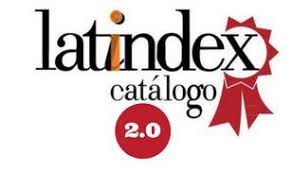Uso público en espacios de propiedad privada. El espacio colectivo del Centro Empresarial Nueva las Condes, Santiago de Chile
DOI:
https://doi.org/10.22320/07183607.2018.21.38.08Palabras clave:
espacio público, uso público, diseño urbano, accesibilidad, vitalidad urbanaResumen
La red de espacios urbanos de uso público se compone también por espacios de propiedad y administración privada. Se reconoce que estos últimos adquieren un rol importante en la escena cotidiana y que la presencia de personas y su uso intensivo los convocan a formar parte del dominio público (Lofland, 1998). El presente artículo se detiene a analizar un caso representativo situado en Santiago de Chile, el paseo peatonal del centro empresarial Nueva Las Condes, poniendo el foco de observación en la forma en que se desarrolla su uso público. Considerando sus particulares estructuras de administración y gestión, la investigación privilegia el uso de metodologías cualitativas que examinan las condiciones físicas que favorecen la accesibilidad y motivan la permanencia de personas, pero también se aboca a caracterizar a sus usuarios y a las actividades que desarrollan en él. El objetivo está en determinar qué aspectos de su forma, función, usuarios y actividades presentes son importantes a la hora de promover una condición pública del lugar. Más allá de las esperables restricciones administrativas al uso público, los resultados exponen lecturas sobre el tejido de relaciones presentes y su relación con el medio físico y funcional. Se relativizan las afirmaciones más categóricas sobre el lugar, valorando ahora aspectos sutiles, pero con un fuerte potencial para fomentar la condición pública del espacio.
Descargas
Citas
Boulevard Nueva Las Condes, Revista AOA de la Asociación de Oficinas de Arquitectos de Chile, 2012, agosto, n° 20, pp. 48-55.
BAUMAN, Zigmunt. Modernidad Líquida. 1° ed. 8° reimp. Buenos Aires: Fondo de Cultura Económica, 2007. Título original: Liquid Modernity, 2000.
BORJA, Jordi y MUXÍ, Zaida. Espacio Público: Ciudad y Ciudadanía. Barcelona: Electa, 2003.
CRAWFORD, Margaret, Desdibujando las fronteras: espacio público y vida privada. Quaderns, 2001, n° 228, pp. 14-22.
DE SOLÀ-MORALES, Manuel. Espacios públicos y espacios colectivos, Revista Universitaria, 1994, no 46. pp. 38-41.
DE SOLÁ-MORALES Manuel. Un archivo documenta la recuperación reciente del espacio público en Europa. Profesionales analizan en Barcelona los riesgos y retos de las ciudades globales. El País [en línea], Cultura, 2003, 27 julio. [Consultado 10 marzo 2009]. Disponible en: http://www.elpais.com/articulo/cultura/archivo/documenta/recuperacion/ reciente/espacio/publico/Europa/elpepicul/20030727elpepicul_3/Tes
DIMMER, Christian (ed.). Privately Owned Public Space: The International Perspective, SUR: Sustainable Urban Regeneration, Center for Sustainable Urban Regeneration, The University of Tokyo, Special Issue, vol. 25, January 2013.
FARÍAS, Ignacio. Intimidad cultural en espacios de consumo. El Mall Plaza Vespucio y la imposibilidad de una cultura pública. En: TIRONI, Manuel y PÉREZ, Fernando (eds.). SCL | Espacios, Prácticas y Cultura Urbana. Santiago: ARQ Ediciones, 2009, pp. 18-33.
FARIÑA, José. Las nuevas agrupaciones de vivienda y la pérdida de funciones del espacio público. Complejidad y seguridad. En: FARIÑA, José (ed.). Los nuevos espacios públicos y la vivienda en el siglo XXI. Madrid: Instituto Juan de Herrera, Ministerio de Vivienda, 2009, pp. 31-56.
GAUSA, Manuel. The metapolis dictionary of advanced architecture. Barcelona: Actar, 2003, p. 561.
GEHL, Jan. La humanización del espacio urbano. La vida social entre los edificios. Traducido de la 5° edición inglesa. Barcelona: Reverté, 2006.
GEHL, Jan. Ciudades para la Gente. Buenos Aires: Infinito, 2014.
JACOBS, Jane. Muerte y vida de las grandes ciudades. Salamanca: Capitan Swing Libros, 2011. Título original: The Death and Life of Great American Cities. 1° Edición Random House, Nueva York, 1961.
LOFLAND, Lyn H. The Public Realm. Exploring the City’s quintessential social territory. Nueva York: Aldine de Gruyter, 1998.
MINVU y Gehl Architects. La dimensión humana en el espacio público. Recomendaciones para el análisis y el diseño. Santiago: Ministerio de Vivienda y Urbanismo de Chile, 2017.
MONNET, Jerôme. El espacio público definido por sus usos. Documento presentado en el Seminario: Diálogos Abiertos Sobre Urbanismo. PUC y Embajada de Francia, Santiago de Chile, 13, 14 y 17 de diciembre, 2010.
MORA, Rodrigo y ZAPATA, Isabel. Comercio, espacio público y gestión local: el caso de Providencia en Santiago de Chile, Revista de Urbanismo [en línea], 2004, enero, n° 9, pp. [Consultado 12 enero 2010]. Disponible en: http://web.uchile.cl/vignette/revistaurbanismo/CDA/urb_ pleta/0,1313,ISID%253D315%2526IDG%253D2%2526ACT%253D 0%2526PRT%253D6599,00.html
PÉREZ, Francisca. Condominios de Huechuraba. Relatos, discursos e imágenes de la vida barrial. En: TIRONI, Manuel y PÉREZ, Fernando (eds.). SCL | Espacios, Prácticas y Cultura Urbana. Santiago: ARQ Ediciones, 2009, pp. 102-117.
SASSEN, Saskia. Making public interventions in today’s massive cities. Generalized Empowerment: Uneven Development and Urban Interventions, City Mine (d), Brussels, 2006, p. 17-23.
SCHLACK, Elke. Espacio público, Revista ARQ, 2007, no 65, pp. 25-27
SCHLACK, Elke. Städtebaurecht und Öffentlicher Raum. Vergleichende Fallstudien zu Santiago de Chile und Berlin [en línea]. Tesis doctoral. Technische Universität Berlin, 2008-2009. [Consultado 23 noviembre 2010]. Disponible en: https:// depositonce.tu-berlin.de/handle/11303/2486
SCHLACK, Elke. Producción privada de espacio público: Espacios privados de uso público y la planificación por incentivos. De arquitectura, 2011, no 24, pp. 18-25.
SCHLACK, Elke. El espacio público en la Nueva Providencia de German Bannen. Una norma de incentivo distintiva. El carácter público de los espacios. En: SCHLACK, Elke (ed.). POPS. El uso púbico del espacio urbano. El carácter público a través de la normativa. Santiago: ARQ ediciones / Capital Books / Universidad Andrés Bello, 2015, pp. 3-37.
SCHLACK, Elke; HIDALGO, Rocío; ARCE, María Jesús; FARIÑA, Carolina y VILLARROEL, Karin. Espacios de intercambio comercial en Santiago de Chile: tres maneras de aportar a la esfera pública de áreas urbanas, Revista de Estudios Sociales, 2017, n° 60, pp. 87-105.
SORKIN, Michael (ed.). Variaciones sobre un parque temático. La nueva ciudad americana y el fin del espacio público. Barcelona: Editorial Gustavo Gili, 2004. Título original: Variations On A Theme Park: The New American City and the End of Public Space. Nueva York: Hill and Wang, 1992.
STILLERMAN, Joel. Private, Parochial, and Public Realms in Santiago, Chile’s Retail Sector, City & Community [en línea], 2006, septiembre, vol. 5, n° 3, pp. 293-317. [Consultado 28 octubre 2015]. DOI: https://doi.org/10.1111/j.1540- 6040.2006.00182.x
STILLERMAN, Joel; Salcedo, Rodrigo. Transposing the Urban to the Mall: Routes, Relationships and Resistance in two Santiago, Chile Shopping Centers, Journal of Contemporary Ethnography [en línea], 2012, vol. 41 n°3, pp. 309-336. DOI: https://doi.org/10.1177/0891241611434551
VALENZUELA, Luis y OPAZO, Daniel. Proyecto Urbano en Santiago 1990-2010: modernización y forma de la ciudad. En: GREEN, Margarita; ROSAS, José y VALENZUELA, Luis. Santiago | Proyecto Urbano. Santiago: ARQ ediciones, 2011, pp. 129-153.
VICUÑA, Magdalena e HIDALGO, Rocío. Premio Nacional de Urbanismo 1971- 2014. Santiago: Ministerio de Vivienda y Urbanismo, 2014.
VICUÑA, Magdalena. Espacios públicos de propiedad privada. Perspectivas desde el análisis del marco normativo nacional y extranjero. En: SCHLACK, Elke (ed.). POPS. El uso púbico del espacio urbano. El carácter público a través de la normativa. Santiago: ARQ ediciones / Capital Books / Universidad Andrés Bello, 2015, pp. 159-179.
VON HAGEN, Juliane. El desafío de los espacios públicos de propiedad privada. En: SCHLACK, Elke (ed.). POPS. El uso púbico del espacio urbano. El carácter público a través de la normativa. Santiago: ARQ ediciones / Capital Books / Universidad Andrés Bello, 2015, pp. 111-133.
WHYTE, William H. The social life of small urban spaces. Washington, D.C.: Ed. Project for public spaces, 1980.
Publicado
Cómo citar
Número
Sección
Licencia
El contenido de los artículos y reseñas que se publican en cada número de Urbano, es responsabilidad exclusiva de los autores y no representan necesariamente el pensamiento ni comprometen la opinión de la Universidad del Bío-Bío.
Las/os autoras/es conservarán sus derechos de autor, sin embargo, garantizarán a la revista el derecho de primera publicación y difusión de su obra. La publicación del artículo en Urbano estará sujeta a la Licencia de Reconocimiento de Creative Commons CC BY-SA que permite a otros compartir-copiar, transformar o crear nuevo material a partir de esta obra para cualquier propósito, incluso comercialmente, siempre y cuando se reconozcan la autoría y la primera publicación en esta revista, y sus nuevas creaciones estén bajo una licencia con los mismos términos.![]()























